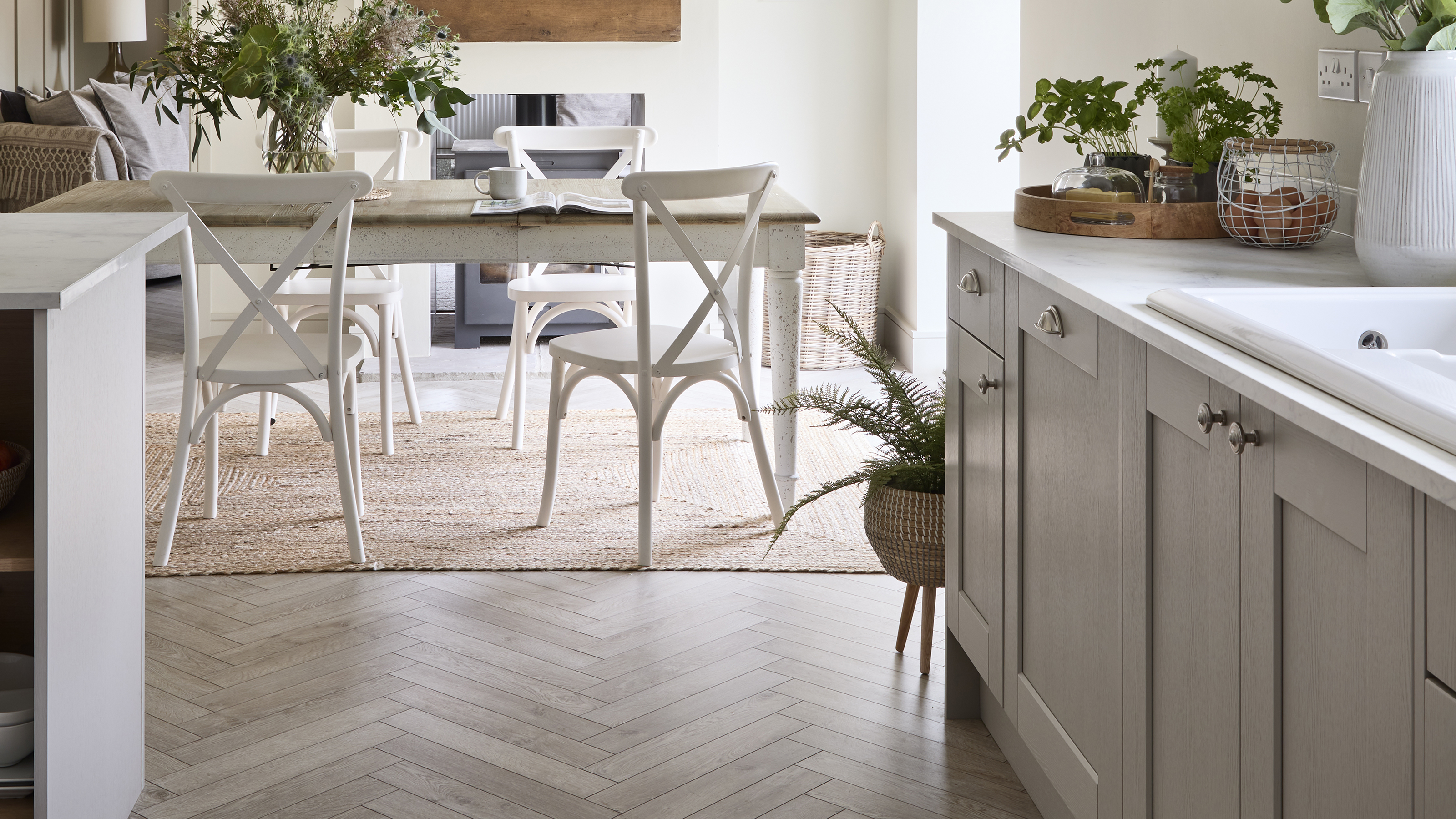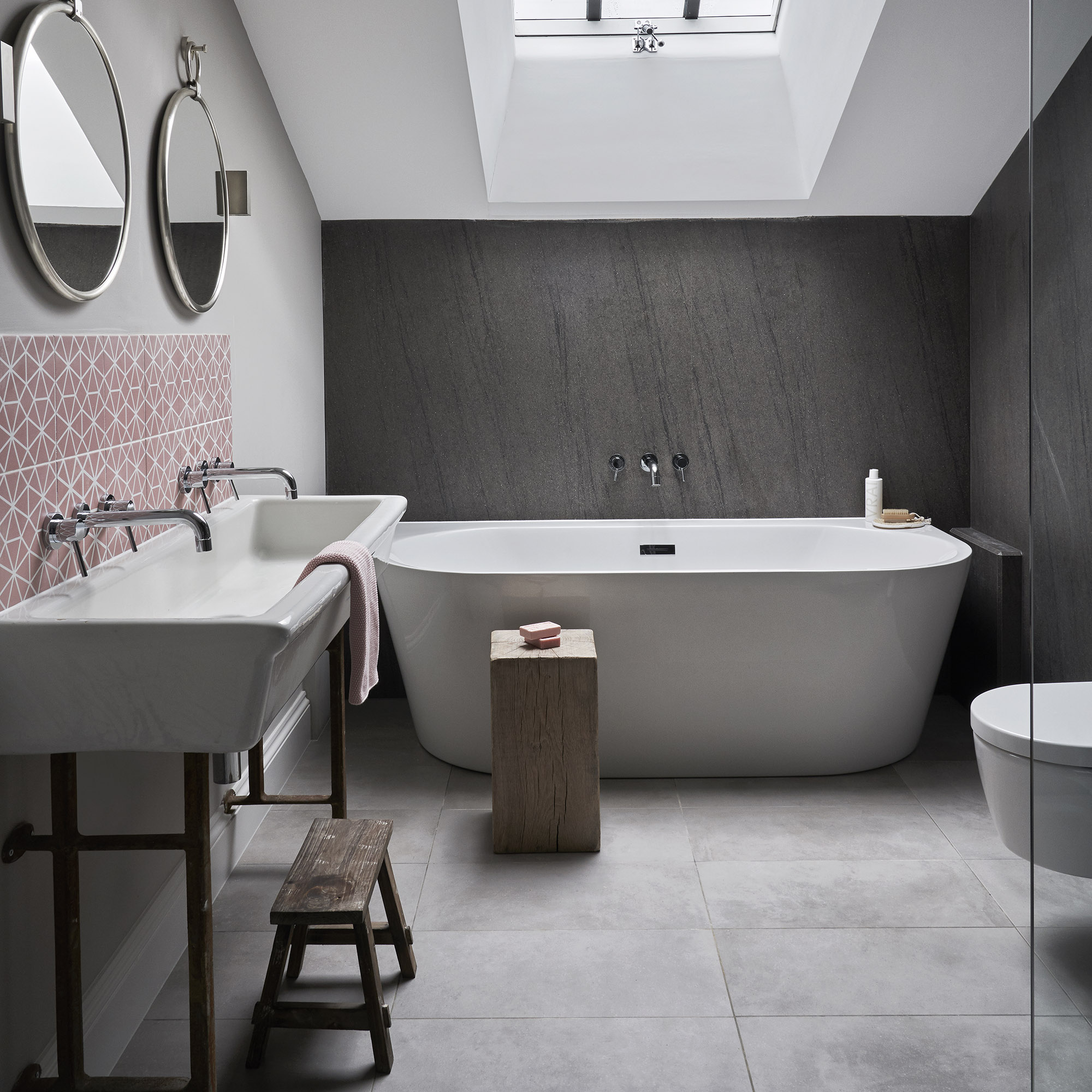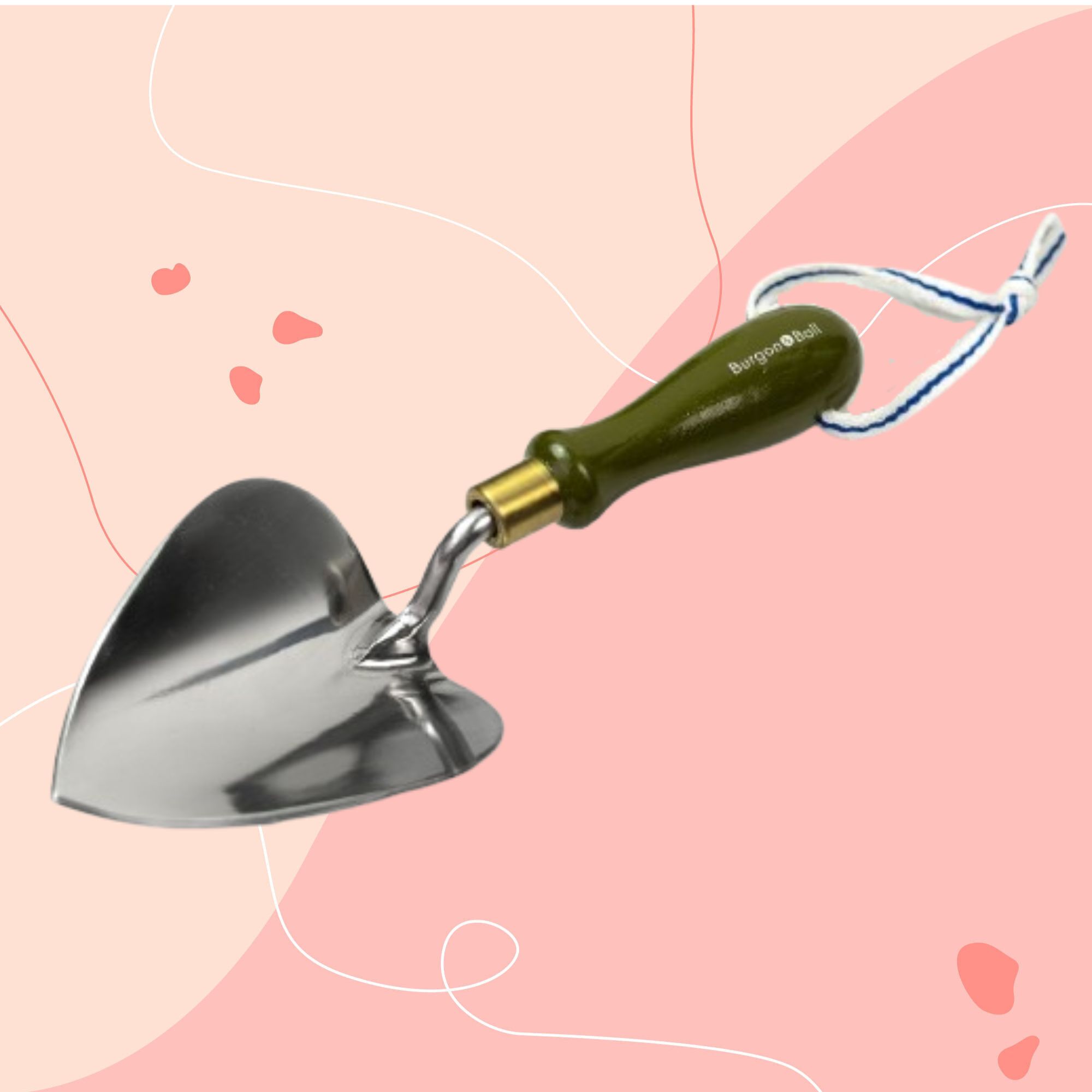How efficient is underfloor heating? See the energy and cost savings
Discover how the right underfloor heating system could save you energy and money off your bills


Holly Cockburn
Underfloor heating might seem like a luxury but many homeowners are now opting for it as their main heating system - so how efficient is underfloor heating? It has the potential to save you money on your energy bills and add value to your home, but there are a few important provisos to bear in mind before charging ahead with installation.
'The key to any good underfloor heating system is proper design,' says Matt Densham at Robbens. 'While heat loss calculations are becoming less important due to better insulation standards nowadays, it’s still important to make sure UFH is designed to perform well.'
You might also be weighing up underfloor heating vs radiators in terms of initial cost, maintenance and ease of use, so finding out more information about the efficiency might help you to make that decision. So, if you're looking for ways to save energy at home for the long term, take a look at how efficient your current heating system is and consider making a change.
How efficient is underfloor heating?

When discussing how efficient is underfloor heating, the first important point to make is that UFH requires a lower input temperature than a radiator to work effectively. 'Due to their small surface area, radiators typically need 70°C-80°C to heat a building effectively,' explains Matt from Robbens. 'Because the floor area of a room is much greater, the UFH requires a lower input temperature, sometimes only 35°C.'
This lower input temperature is where the energy-saving potential lies – and if you’re saving energy, you’ll be able to claw back money on your utility bills, too. 'Typically, UFH will be 10–20% more efficient than radiators,' adds Matt.

Nicholas has had a number of roles in the energy efficiency sector from installer and trainer to senior management, driving positive environmental change. He is now Group CEO of South Coast Insulation Services, a fully accredited energy efficiency provider, and renewable heating and insulation installer driving tangible energy savings and carbon reduction across the UK.
Here, we sum up the key factors for getting the best out of your underfloor heating system.
1. Heat effectiveness
To know how efficient is underfloor heating compared to a conventional radiator system, it’s important not to focus solely on what temperature each of the systems run at. It is also the way in which heat is distributed.
Get the Ideal Home Newsletter
Sign up to our newsletter for style and decor inspiration, house makeovers, project advice and more.
'Radiators produce a much higher heat locally and rely on the air circulation they create to distribute heat throughout the room,' says Michael Schienke, director at Vorbild Architecture. 'A comparable lower heat as produced by underfloor heating is much quicker and more uniformly distributed throughout the space.'

UFH produces radiant heat, whereas radiators rely on convection to spread heat around the room. The air warmed by a radiator moves upwards and once it has cooled, it moves downwards to be reheated by the radiator. Ultimately, this establishes a flow of warm and cool air throughout the space, whereas UFH delivers an even spread of heat, resulting in impressive internal comfort levels.
'When evaluating the efficiency of underfloor heating versus traditional radiators, several factors come into play. One key consideration is the type of heating system that powers these components. For example, if you have an older system boiler responsible for heating the underfloor system and a modern combi boiler providing warmth to the radiators, it’s likely that the combi boiler and radiators would demonstrate higher efficiency,' says Nicholas Gillanders, CEO of South Coast Insulation Services (SCIS).
'This difference in efficiency arises due to the distinct technologies used in these two heating methods. Combi boilers are renowned for their on-demand hot water production and efficient heat distribution to radiators, which can lead to energy savings. In contrast, older system boilers tend to be less energy-efficient and if used in collaboration with underfloor heating systems could compromise the overall efficiency of such systems.'
2. Energy usage

Although underfloor heating operates at a lower temperature, it’s capable of achieving the same level of warmth and comfort throughout your home. This is where it helps you save energy. 'UFH systems are estimated to use 15-40% less energy than a radiator,' says Luciana Kola, marketing manager at Uponor.
This sustainable benefit stems from the fact that UFH works by warming an entire room evenly. This is more efficient than traditional systems like radiators, where heat is lost by the air rising in only one area.'
The even spread of heat also means that you can rule out having hot spots and chilly corners within the same room, instead maintaining the same level of comfort throughout.
To ensure that heat is distributed evenly across the whole space, effective installation of your system is vital. For instance, pipework must be laid at neat, regular intervals – irregular spacing is therefore a key red flag to look out for during the installation process.
It's also best optimised in small areas, for example, underfloor heating in a bathroom, so bear this in mind when deciding on where to incorporate it in your home.
3. Running costs
The initial outlay for underfloor heating costs – supply and installation – is greater for UFH than radiators. The cost savings of UFH will be delivered over the long term. As we already know, your boiler (or other heat source) won’t have to produce as much heat to warm underfloor heating as it would for radiators. Maximum financial savings will be delivered when you’re running UFH in a thermally-efficient home, minimising the amount of heat that’s wasted as it leaks outwards – more on this later.
It’s also important to ensure you choose the right system for your house. Running costs for electric systems will always be higher than those for a water-based system. Simply because electricity costs more per unit than gas. Therefore, with how efficient is underfloor heating, know that installing electric UFH across a large area or in many rooms won’t be as cost-effective.
Electric underfloor heating works best when it’s fitted in small areas (eg bathrooms), so the running costs remain manageable.
4. Fabric first approach for sufficient insulation

To ensure your UFH system runs efficiently, insulation is a key factor. Without an airtight thermal fabric, precious heat generated by your underfloor heating will be lost via the walls, floors and roof.
'Without the correct home insulation, no heating system or source will effectively and efficiently heat your space,' says Tom Edmunds, general manager at Wunda Group. 'Poor insulation requires higher heating temperatures, which will not provide a comfortable living environment.' In a well-insulated home, a low temperature heat distribution system like underfloor heating will be able to run optimally.
Make sure you've taken the correct precautions, and if you're waiting on proper insulation, or just want to help what you already have, add self-adhesive foam insulation, from £3.49, Amazon, to doors and windows.
5. Incorporating renewables
If you live in a well-insulated home and you want to take your heating system to the next level, one of the best ways to maximise its efficiency is by pairing it with a renewable heat source. Heat pumps draw natural heat from the earth or air, converting it to a level of warmth that can be used to power your home’s heating and hot water.
As heat pumps operate at a lower grade heat than boilers (the optimum temperature is between 30°C and 35°C), they are well suited to lower temperature heat distribution systems, like underfloor heating. Radiators run at a much higher temperature, so a heat pump would have to work a lot harder to heat a radiator up to the required level to heat your house.
FAQs
Is underfloor heating expensive to run?
The initial installation cost of underfloor heating leads many people to believe that it's an expensive option, but once it's up and running, you can actually save heating costs by keeping it at a lower but more consistent temperature.
It's also important to ensure you choose the right system for your home. Running costs for electric systems will be higher than those for a water-based system, as electricity costs more per unit than gas. Therefore, installing electric underfloor heating across a large area or throughout a house won't be as cost-effective.
In short, it's not expensive to run. The cost associated with underfloor heating is large in part due to the initial installation, but it can actually be a more economical option once it's up and running.
If you own a modern, well-insulated home, underfloor heating will be a safe bet when it comes to efficiency. However, if you live in an older, draughtier house, the running costs might not be any better than a radiator for the amount of heat output. Either way, running costs will depend largely on how well-insulated your home is.
Ultimately, choosing the right heating system for your home is a subjective matter that depends on a whole host of factors. But if the initial cost is something you can afford, then underfloor heating can be a more economical choice.

Rebecca Foster started her journalism career in Bangkok in 2013, where she worked on the in-house editorial team at a luxury homes magazine. Since then, Rebecca has contributed to numerous property and interiors titles in the UK and Southeast Asia. She re-located to London in 2015 to work at one of the country’s leading self-build and home renovation magazines. In 2017, she left her job to split her time between freelance journalism and teaching yoga.
- Holly CockburnContent Editor
-
 How to make bedding last longer – avoid buying twice with these expert tips for getting the most out of your bed linen
How to make bedding last longer – avoid buying twice with these expert tips for getting the most out of your bed linen5 top tips for prolonging the lifespan of your bed linen, duvet, and pillows
By Amy Lockwood
-
 I was introduced to this clever heart-shaped trowel 2 months ago, and now I'll never garden without it – it's made planting seedlings so easy
I was introduced to this clever heart-shaped trowel 2 months ago, and now I'll never garden without it – it's made planting seedlings so easyIt's affordable and stylish
By Sophie King
-
 The pink Ninja air fryer of our dreams has arrived, but only in the US
The pink Ninja air fryer of our dreams has arrived, but only in the USNinja's spring colours collection i the US has sparked some serious appliance envy
By Molly Cleary